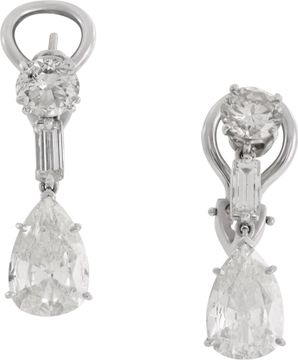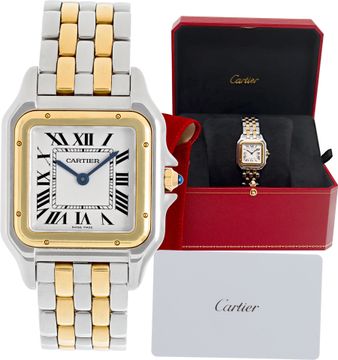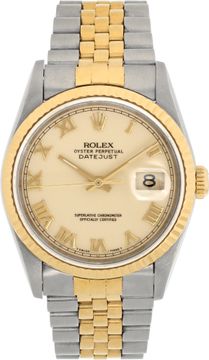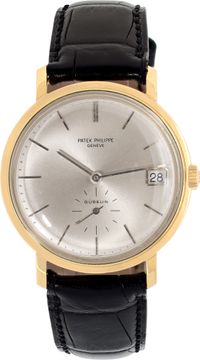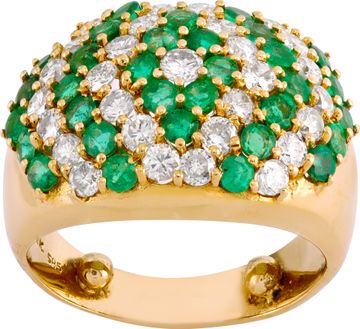Rolex Compare: Daytona 116500 vs Daytona 116520

If you’re looking for the it chronograph, then look no further than the Rolex Daytona. Without a doubt the most popular luxury chronograph today, the Daytona boasts a history, design, and technical mastery that is unmatched. Even Paul Newman chose to wear one–and his sold for $17.8 million! From the days of being a manual-wound chronograph to today’s sleek automatic versions, the Rolex Daytona is one to have in any collection. But the question is, which Daytona is best? Today we compare the Daytona 116500 vs Daytona 116520. Both stainless steel, both collectible, both hard to find, and both awesome–it’s a tough choice. So read on to figure out which Daytona would suit you best.
Brief History: Daytona 116500 vs Daytona 116520

The Rolex Daytona ref. 116520 made its debut in 2000. It was a big year for the Daytona because it marked the transition from a Zenith El Primero based movement, the Caliber 4030, to an entirely in-house Rolex movement, the Caliber 4130. The stainless steel version of the first in-house automatic Rolex chronograph was the Daytona ref. 116520 and it was a huge hit. Everyone wanted one and waitlists were years-long.

Fast-forward to 2016 and history repeated itself in terms of hype and buying frenzy with the launch of the new Daytona ref. 116500. Yet again, everyone wanted one and waitlists exploded around the world. While the new Daytona ref. 116500 still had the same engine so to speak, its looks are different.
Design: Daytona 116500 vs Daytona 116520
With respect to design, the new Daytona 116500 and the preceding Daytona 116520 share plenty of traits. First, they’re both steel models crafted in 904L stainless steel, which is highly resistant to corrosion and has a fantastic sheen. Also, both Daytona models sport a 40mm Oyster case outfitted with screw-down pushers, and screw-down winding crown, and a fluted caseback to maintain its water resistance to 330 feet. What’s more, the Daytona ref. 116500 and the Daytona ref. 116520 are both available with either a white dial or a black dial. The dial also both have the familiar 3/6/9 layout of the trio of subdials and the signature DAYTONA label in red. Finally, both stainless steel Daytona chronographs are equipped with the ubiquitous sporty Oyster bracelet with the flat three-piece link design.

The main difference between the Daytona 116520 and the 116500 is found on the bezel. The older steel Daytona ref. 116520 comes with a steel bezel engraved with the tachymeter scale while the new steel Daytona ref. 116500 features the black Cerachrom ceramic bezel. It is precisely this bezel that grabbed the attention of Rolex fans all over the world.
Many of Rolex’s modern steel sports watches, like the Submariner, GMT-Master II, Yacht-Master II, include the awesome ceramic bezel. Prior to 2016 however, only gold and platinum versions of the Daytona were available with a ceramic bezel. So when the stainless steel Daytona ref. 116500 was finally unveiled with the sought-after Cerachrom ceramic bezel, it was a welcomed model to say the least!

Cerachrom is the name that Rolex has given to their particular type of patented ceramic with a layer of gold or platinum to fill the engraved markings on the bezel. What’s the big deal about ceramic you ask? Attractiveness aside, ceramic is also highly resistant to scratching and fading, meaning it’ll retain its great looks pretty much forever. Aluminum bezels from yesteryear can fade after repeated exposure to the sun and metal bezels can get scratched up from daily use. So ceramic does away with these problems.
Caliber 4130: Daytona 116500 vs Daytona 116520
While both the Daytona ref. 116500 and the ref. 116520 run on the Caliber 4130 automatic chronograph movement, it’s important to note a big change Rolex introduced a few years back. In July 2015, Rolex announced that they redefined their Superlative Chronometer Officially Certified label so that their watches would now have an even better accuracy rating of 2/+2 seconds per day. Furthermore, the company extended their warranty to five years rather than the previous two years. So the Daytona ref. 116500 (which came out in 2016) falls under these new parameters.
What’s Better? Daytona 116500 vs Daytona 116520
Both are superb chronograph watches that share identical sizes and movements. So deciding between the new Daytona 116500 vs. Daytona 116520 comes down to the bezel style. Some love the look of the black ceramic bezel, but it does have a few disadvantages. While it’s resistant to scratching and fading, ceramic is brittle so it can shatter and chip. And replacing one is very expensive. Others prefer the streamlined look of the steel bezel with the steel case and bracelet, despite the tendency for the metal to scratch. Although the Daytona 116520 is no longer in production, it still enjoys widespread popularity in the secondary market. It offers the classic Daytona look that will always be admired.

As always, buying a luxury watch comes down to personal taste. Whether you decide to opt for the new ceramic Daytona ref. 116500 or the quintessential Daytona 116520, you really can’t go wrong with either of these stainless steel Rolex chronographs.
March Birthstone Aquamarine Jewelry
NEXT ARTICLE
Van Cleef & Arpels Jewelry That’ll Make Your Heart Flutter

